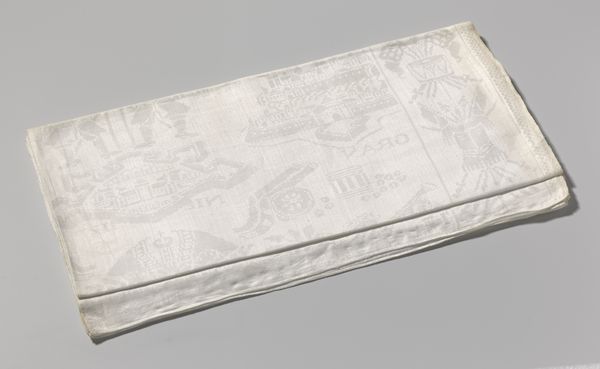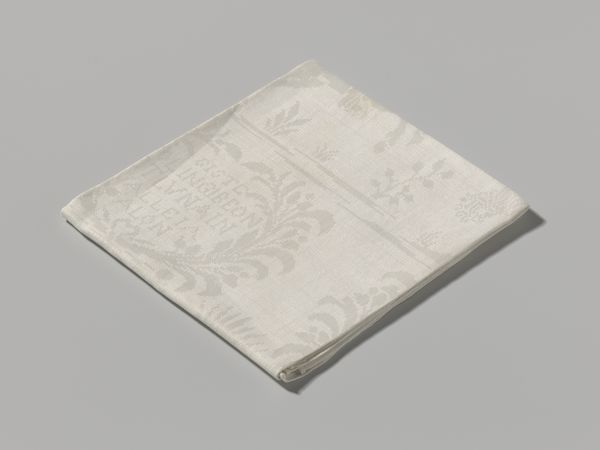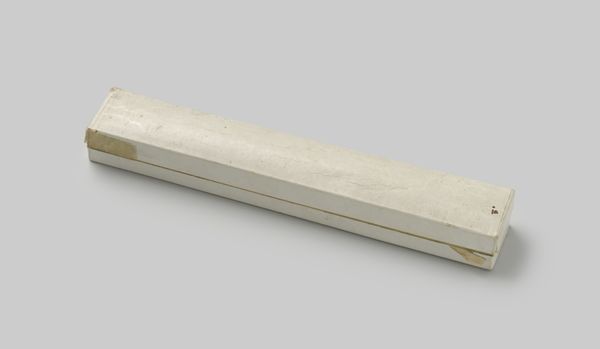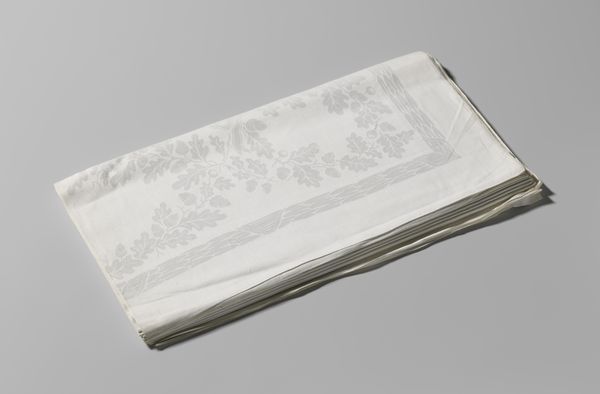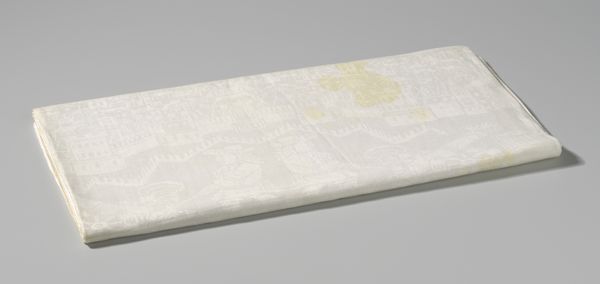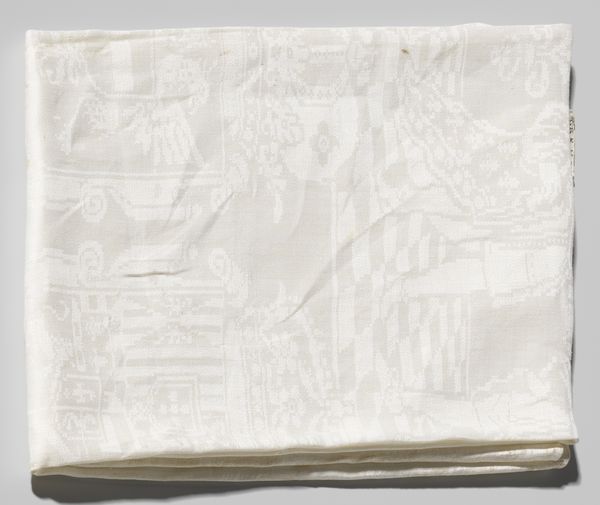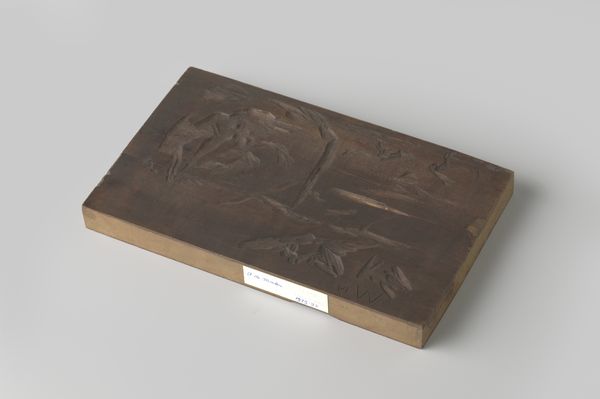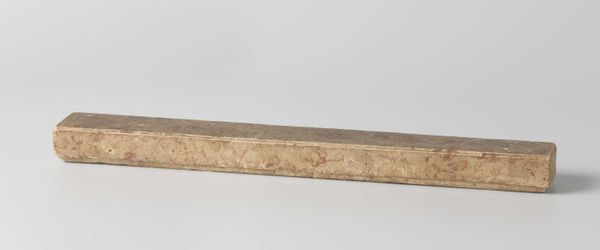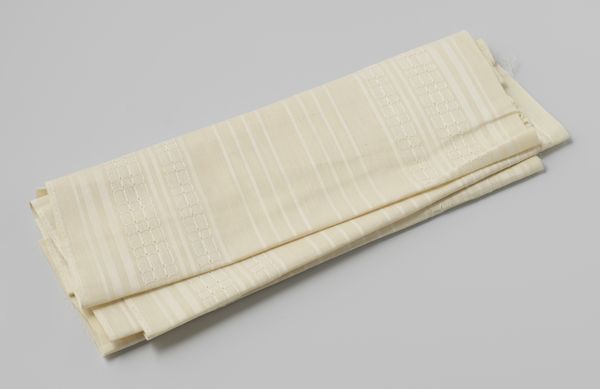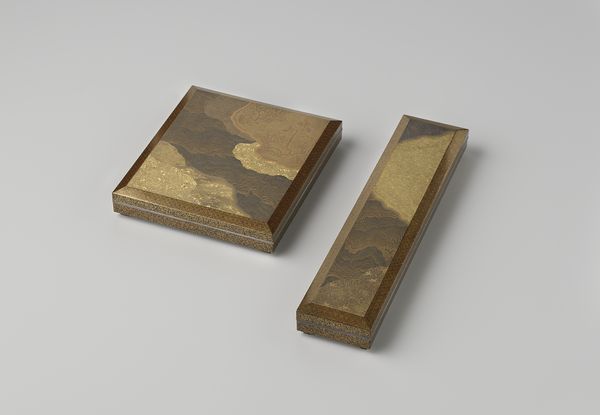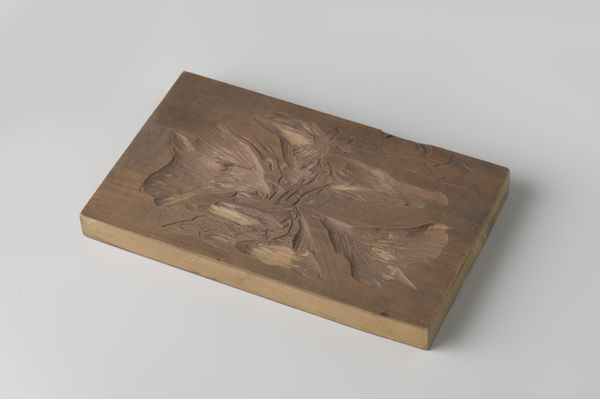
Strook franje, getand, wit en écru, gewikkeld rond een met gouden randen afgezet plankje c. 1925
0:00
0:00
mixed-media, textile
#
studio photography
#
product studio photography
#
aged paper
#
mixed-media
#
textile
#
wood background
#
natural palette
#
decorative-art
#
cutout
Dimensions: width 5 cm, length 27 cm, width 18 cm
Copyright: Rijks Museum: Open Domain
Curator: Here we have an intriguing piece from around 1925, entitled "Strook franje, getand, wit en écru, gewikkeld rond een met gouden randen afgezet plankje" or "Strip of fringe, serrated, white and ecru, wrapped around a small board with gold edges" by Gustav Schnitzler. Editor: Well, that’s quite a mouthful! My first impression is this thing has a tangible quietness to it, a soft-spoken elegance in those muted tones. It also seems so simple at first, almost like an unearthed relic from a grandmother’s sewing box, and also what even is it really meant for? Curator: It’s difficult to definitively categorize, isn’t it? Schnitzler often blurred lines. It's described as a mixed-media piece with textile, presented as if it were studio photography. I find this really makes you consider how even mundane materials like this little sample have a history embedded within their making and intended application. It makes you think about someone designing a room, picking out those fabrics. Editor: Precisely! I find myself picturing the hands involved. Was it mass produced? Who operated the machinery? The precision of the fringe, that subtle geometric pattern. What was this for – a boudoir, or for export perhaps to a huge chain? There’s a beautiful tension there; this hints at mass production but retains such a handcrafted feel. Curator: Right! You wonder how conscious he was, working within this interwar period, of the changing world, with a shift in production? The materials speak to tradition and, well, ornamentation—while the industrial age comes to a fast paced fruition. Editor: Exactly! It bridges worlds! Did this object celebrate handicraft or unconsciously herald the machine made? Ultimately, it invites contemplation on these ideas of worth and artistic significance placed on humble components. I mean it's also so tactile, one imagines those frills swishing if someone handled the sample card too fast. Curator: The real story might not be what the sample IS but instead what possibilities it contains or even represents! You nailed it, what we consider 'art' at any moment in history is, maybe, not set in stone but more so about potential! Editor: I totally agree! Thank you! Now, on to the next undiscovered story!
Comments
No comments
Be the first to comment and join the conversation on the ultimate creative platform.

